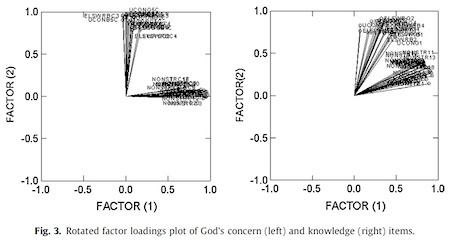Marc Abrahams's Blog, page 475
July 29, 2013
Wince, he wrote
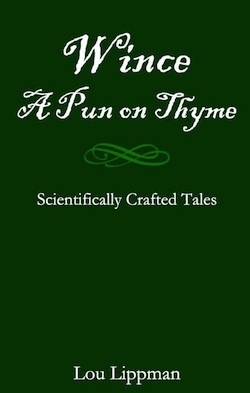 Of all the editorial board members of the Annals of Improbable Research, one stands above and below all others in his devotion to puns. Lou Lippman [pictured below] has now written a book distilling much of that devotion and love into readable form. The book is called Wince: A Pun on Thyme: Scientifically Crafted Tales.
Of all the editorial board members of the Annals of Improbable Research, one stands above and below all others in his devotion to puns. Lou Lippman [pictured below] has now written a book distilling much of that devotion and love into readable form. The book is called Wince: A Pun on Thyme: Scientifically Crafted Tales.
Professor Lippman retired a few years ago after 42 years of teaching experimental psychology at Western Washington University. Wince shows what a person can do if he is permitted to spend all his time and thought writing such a book.
Dean Kahn profiled the book, in the Bellingham Herald:
Retired psychology professor Lou Lippman takes his humor seriously. So much so that he has done research into what makes puns most effective. That’s why the Bellingham author’s new collection of pun stories, “Wince: A Pun on Thyme,” is subtitled “Scientifically Crafted Tales.”
His insight, which he tested with his students and reported in serious publications, is that stories that end with puns are judged funnier and more clever if the tales provide fuller context for the punch line, without being too obscure or too obvious leading up to the finish. His book offers 176 such tales, most of them less than a page long…
Growing up in San Diego, Lippman was schooled early in humor by his grandfather, who was a fan of plastic vomit and plastic doggie doo.…
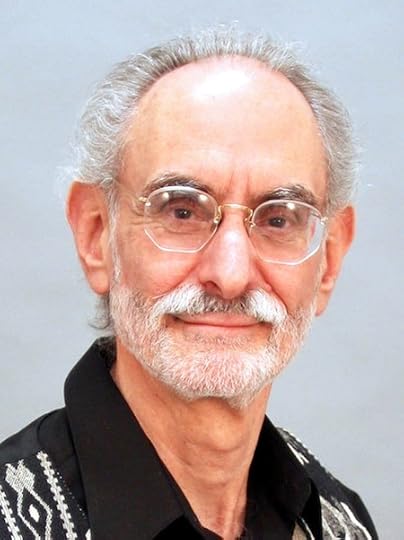

Comparative study of the minds of gods (Purzycki / Gaiman)
Comes further progress in understanding the minds of gods. A newly published study:
“The minds of gods: A comparative study of supernatural agency,” Benjamin Grant Purzycki [pictured here], Cognition, vol. 129, 2013, pp. 163–179. The author, at the University of British Columbia, Canada, explains:
“The present work is the first study to systematically compare the minds of gods by examining some of the intuitive processes that guide how people reason about them…. These results further demonstrate that there is a significant gulf between expressed beliefs and intuitive religious cognition and provides evidence for a moralization bias of gods’ minds.”
Here is further detail from the study, about a god named God: rotating factor loadings plots of (1) God’s concern and (2) God’s knowledge:
 Christian Jarrett, in Research Digest, discusses the academic merits of this study.
Christian Jarrett, in Research Digest, discusses the academic merits of this study.
(Thanks to investigator Reto Schneider for bringing this to our attention.)
BONUS: For a more detailed, and perhaps more readable, study of the same subject, see also the writings of Neil Gaiman [pictured here].
BONUS: Professor Purzycki’s “Theory of Mind in Chimpanzees: A Rationalist Approach“

Implementing a Bird Imitator
Preamble: Improbable has attempted to make contact with the Ukrainian Podgorny Institute in order to obtain a photo of their rubbery ‘Bird Imitator’, but, sadly, our efforts failed – so in lieu we have used a relatively non-representative picture of a latex chicken.
 Bird Strikes are a considerable hazard for aircraft – see, for example, the alarming 2009 case of US Airways Flight 1549 which was forced to make an emergency landing on the Hudson River in New York after running into a flock of Canada Geese. Unfortunately, efforts to empirically test aircraft components in the lab (by launching birds at them at very high speed) are hampered by ethical and hygiene concerns. Prompting a team of researchers at the Department for Strength and Optimisation of Constructions at the A.N. Podgorny Institute for Mechanical Engineering Problems, National Academy of Sciences, Ukraine, to devise and implement their ‘Bird Imitator’ – profiled here (para.3)
Bird Strikes are a considerable hazard for aircraft – see, for example, the alarming 2009 case of US Airways Flight 1549 which was forced to make an emergency landing on the Hudson River in New York after running into a flock of Canada Geese. Unfortunately, efforts to empirically test aircraft components in the lab (by launching birds at them at very high speed) are hampered by ethical and hygiene concerns. Prompting a team of researchers at the Department for Strength and Optimisation of Constructions at the A.N. Podgorny Institute for Mechanical Engineering Problems, National Academy of Sciences, Ukraine, to devise and implement their ‘Bird Imitator’ – profiled here (para.3)
“The technology of making a bird imitator for testing structural optics products for bird impact resistivity.
A bird imitator is being developed for testing aircraft structural optics elements for bird impact resistivity. In contrast to existing analogs, the imitator meets sanitary and hygiene requirements, industrial design regulations, is easy to make and requires no special conditions for prolonged storage.”
Clarification: [1] The structural optic products and elements referred to are, most likely, ‘windows’.
The Institute’s ‘Bird Imitator’ (a.k.a. ‘Bird Dummy’) was also mentioned in a 2013 paper for the Journal of Aircraft, Vol. 50, No. 3, pp. 817-826. ‘Bird Dummy for Investigating the Bird-Strike Resistance of Aircraft Components‘
“This paper deals with making a bird dummy for testing the bird-strike resistance of aircraft components. A new bird dummy has been offered. It differs from existing analogs by reproducing the impact impulse with high accuracy. Besides, it is easy to make, store, and clean up its fragments after tests. The bird dummy is made of silicon [sic] that models the bird’s muscular tissue. It also has plastic ball fillers for modeling the skeleton and the cavities inside the bird. The results of comparative experimental research in strain occurring in a steel target plate and the elements of aircraft transparencies, as well as the damages of an aircraft vertical stabilizer during impact with the dummy and a real bird, are given. Data are presented for different impact angles and velocities. Comparative experiments have shown that using the dummy offered for testing the bird-strike resistance of aircraft components is a viable option.”
Clarification: [2] ‘Silicon’ – the brittle semiconducting element mentioned above, should probably instead read ‘Silicone’ – the soft rubbery polymer.
NOTES:
[1] The technical term for the waste material produced after a bird has interacted with an aircraft in a mutually destructive way, e.g. it’s been through an operational jet turbine – is ‘Snarge‘.
[2] The Smithsonian Institution Feather Identification Lab investigates characterises and catalogues snarge – it’s program manager is Dr. Dove.
[3] The rubber chicken pictured above is available for purchase (£9.19 plus taxes/delivery as appropriate) from the UK-based firm The Joke Shop.

July 27, 2013
Littlewood’s Law (of miracles-per-month)
 Wikipedia describes Littlewood’s Law:
Wikipedia describes Littlewood’s Law:
Littlewood’s Law, or adage, states that an individual can expect to experience “miracles” at the rate of about one per month.
The law was framed by Cambridge University Professor J. E. Littlewood, and published in a 1986 collection of his work, A Mathematician’s Miscellany. It seeks among other things to debunk one element of supposed supernatural phenomenology and is related to the more general Law of Truly Large Numbers, which states that with a sample size large enough, any outrageous thing is likely to happen.
Littlewood defines a miracle as an exceptional event of special significance occurring at a frequency of one in a million. He assumes that during the hours in which a human is awake and alert, a human will see or hear one “event” per second, which may be either exceptional or unexceptional. Additionally, Littlewood supposes that a human is alert for about eight hours per day.
As a result a human will in 35 days have experienced under these suppositions about one million events. Accepting this definition of a miracle, one can expect to observe one miraculous event for every 35 days’ time, on average – and therefore, according to this reasoning, seemingly miraculous events are actually commonplace.
BONUS: More info about John Edensor Littlewood [shown above, in a little photo, and below it in a larger photo], who formulated the law.



July 26, 2013
Librarians just want to have fun: Wheel of Confusion
In this video, members of the American Library Association (ALA) try to remember or figure out what some of the ALA’s acronyms might mean. The video is called “Wheel of Confusion”:

Academic Study of a Young Man’s Sexual Attraction to Human Gas
Professor Mark D. Griffiths [pictured here] of Nottingham Trent University has published a remarkable new study.
 Here’s how we know this study is remarkable: The university’s press office sent copies of it to many prominent science journalists, remarking that (1) “It’s the world’s first paper on eproctophilia – sexual arousal from flatulence” and (2) “Professor Griffiths would be more than happy to talk to you in more detail”. A remarkable number of those journalists immediately sent it on to us at the Annals of Improbable Research. We are, in this blog entry you are reading right now, remarking upon that study. The study is:
Here’s how we know this study is remarkable: The university’s press office sent copies of it to many prominent science journalists, remarking that (1) “It’s the world’s first paper on eproctophilia – sexual arousal from flatulence” and (2) “Professor Griffiths would be more than happy to talk to you in more detail”. A remarkable number of those journalists immediately sent it on to us at the Annals of Improbable Research. We are, in this blog entry you are reading right now, remarking upon that study. The study is:
“Eproctophilia in a Young Adult Male,” Mark D. Griffiths, Archives of Sexual Behavior, epub July, 2013.
Professor Griffiths explains, in copious detail:
“One subtype of olfactophilia [a paraphilia where an individual derives sexual pleasure from smells and odors] is eproctophilia. This is a paraphilia in which people are sexually aroused by flatulence. Therefore, eproctophiles are said to spend an abnormal amount of time thinking about farting and flatulence and have recurring intense sexual urges and fantasies involving farting and flatulence. To date, there has been no academic or clinical research into eproctophilia. Therefore, the following account presents a brief case study of an eproctophile and given a pseudonym (Brad). Brad gave full consent for his case to be written up on the understanding that he could not be identified and that he was guaranteed full anonymity and confidentiality….”
There is more. Lots more.
In other respects, too, Professor Griffiths is an expert. So renowned is he that Wikipedia devoted an entire web page to him.
One of the many things on which he is an expert is the academic study of gamblers. We have celebrated some of his abundant work on that subject.
(We express our thanks, and other emotions, to the many journalists who instinctively decided that they should alert us to the existence of Professor Griffiths’s new line of research.)
BONUS (unrelated): The 1998 Ig Nobel Prize for literature was awarded to Dr. Mara Sidoli of Washington, DC, for her illuminating report, “Farting as a Defence Against Unspeakable Dread“ [Journal of Analytical Psychology, vol. 41, no. 2, 1996, pp. 165-78.]

Adams apples : examinations (part 2)
Some, like AdamsAppleBoy shown above are perfectly happy with the size of their Adam’s Apple. But sadly, that’s not the case for everyone, like, for example the late artist Norman Rockwell. And others, who consider theirs to be seriously oversized, might even contemplate chondrolaryngoplasty as a solution. See an example paper in the Indian Journal of Otolaryngology and Head and Neck Surgery April-June 2006, Volume 58, Issue 2, pp 172-173 ‘Reduction of Adam’s apple for appearance.’ by A H H Al-Jassim and T H J Lesser of the University Hospital Aintree Trust, Liverpool, UK. [The article may also be read in full here]
BONUS : Didgerdoo players’ glottic activity – the lowdown

July 25, 2013
Levitated frogs, graphene, and all that
BBC Radio 4 says: “Andre Geim values his Ig Nobel prize for levitating frogs as much as his Nobel for graphene.”
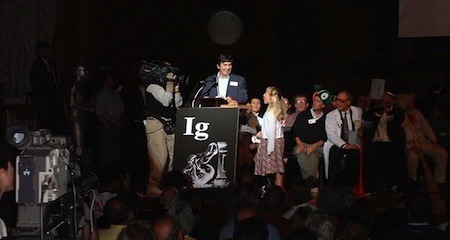
Photo: Andre Geim at the Ig Noble Prize ceremony in the year 2000.

Correlation, causation, and a suicidal link with coffee
A Harvard Gazette article centers on the eternal question “does correlation imply causation?” The article has this headline and opening paragraph:
Coffee drinking tied to lower risk of suicide
Drinking several cups of coffee daily appears to reduce the risk of suicide in men and women by about 50 percent, according to a new study by researchers at the Harvard School of Public Health (HSPH). The study was published online July 2 in The World Journal of Biological Psychiatry….
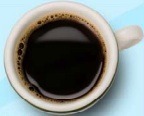
A coffee cup. Photo: Centers for Disease Control.
This is one of the few reports to explicitly state that coffee seems to cause (“Drinking several cups of coffee daily appears to reduce”) a life-or-death effect in people who drink it. In so doing, this report may be a watershed (and/or coffeeshed) in the history of biomedical science, and in the field of biological psychiatry.
BONUS: The report also says, a few paragraphs later, “In spite of the findings, the authors do not recommend that depressed adults increase caffeine consumption…”
(Thanks to investigator Corky White for bringing this to our attention.)
BONUS: (unrelated): The Stephen King of suicidology is now president
BONUS (unrelated): More from Professor Lester

A look at 17 eye-catching Ig Nobel Prize winners
Adam Toobin, at the Huffington Post, gathered an appreciation — with photos and video — of 17 Ig Nobel Prize winners.
BONUS: The 23rd First Annual Ig Nobel Prize ceremony will happen on Thursday evening, September 12, at Harvard University, introducing this year’s new crop of ten Ig Nobel Prize winners. Tickets are available now. The event will be webcast live.

Marc Abrahams's Blog
- Marc Abrahams's profile
- 14 followers


